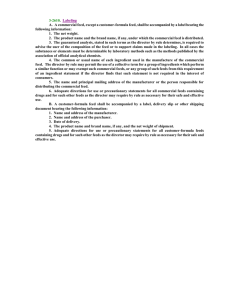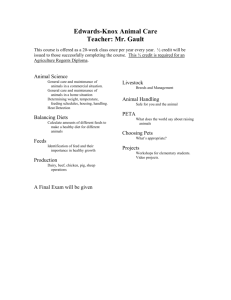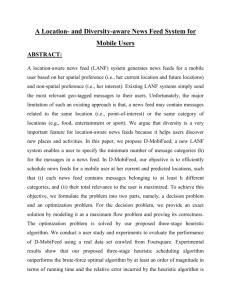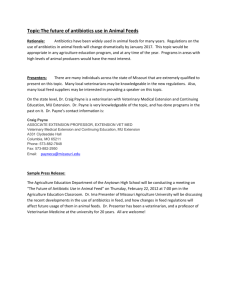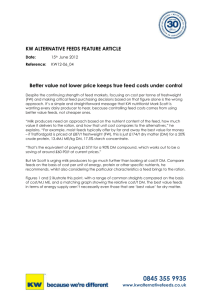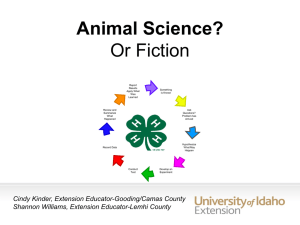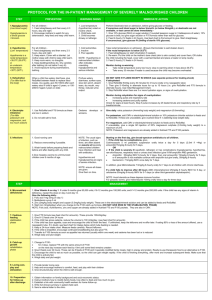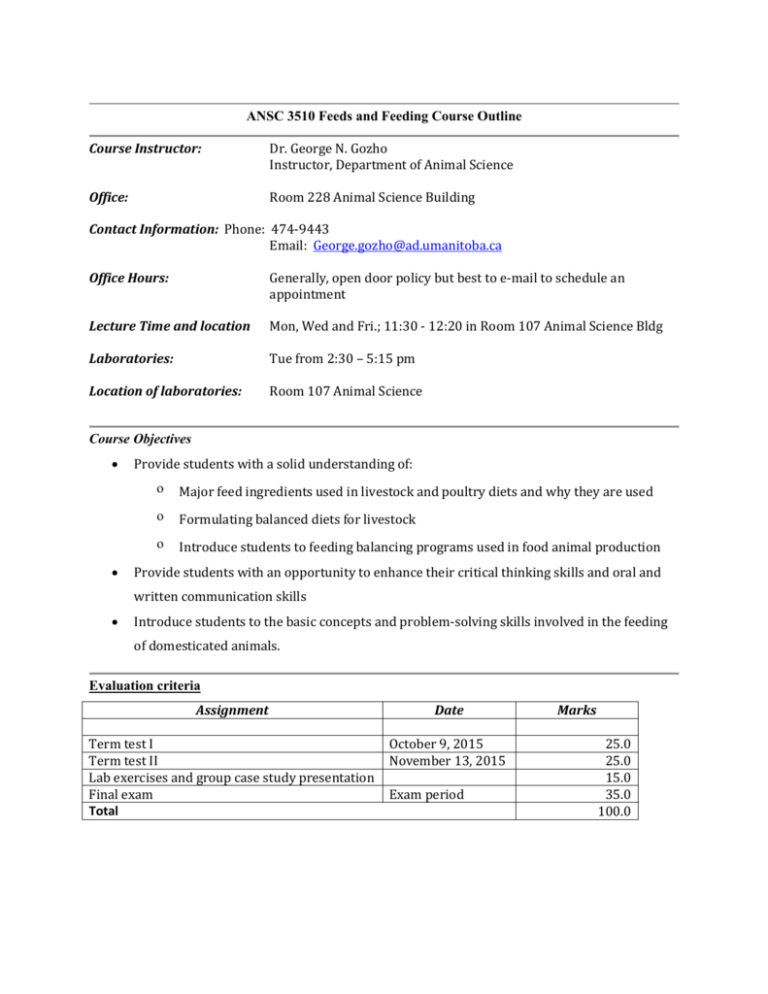
ANSC 3510 Feeds and Feeding Course Outline
Course Instructor:
Dr. George N. Gozho
Instructor, Department of Animal Science
Office:
Room 228 Animal Science Building
Contact Information: Phone: 474-9443
Email: George.gozho@ad.umanitoba.ca
Office Hours:
Generally, open door policy but best to e-mail to schedule an
appointment
Lecture Time and location
Mon, Wed and Fri.; 11:30 - 12:20 in Room 107 Animal Science Bldg
Laboratories:
Tue from 2:30 – 5:15 pm
Location of laboratories:
Room 107 Animal Science
Course Objectives
Provide students with a solid understanding of:
o
Major feed ingredients used in livestock and poultry diets and why they are used
o
Formulating balanced diets for livestock
o
Introduce students to feeding balancing programs used in food animal production
Provide students with an opportunity to enhance their critical thinking skills and oral and
written communication skills
Introduce students to the basic concepts and problem-solving skills involved in the feeding
of domesticated animals.
Evaluation criteria
Assignment
Date
Term test I
Term test II
Lab exercises and group case study presentation
Final exam
Total
October 9, 2015
November 13, 2015
Exam period
Marks
25.0
25.0
15.0
35.0
100.0
Course Materials
REQUIRED TEXT:
Applied Animal Nutrition: Feeds and Feeding, 3rd Edition.
Cheeke, P.R. Pearson/Prentice Hall Publishers.
Available in the Book Store.
OTHER READINGS:
As assigned
Academic Regulations and Policy
Students are directed to the statement on “Cheating, Plagiarism and Fraud” under the Student
Affairs (Student Advocacy) website:
http://umanitoba.ca/student/resource/student_advocacy/cheating_plagiarism_fraud.html. All students
are required to familiarize themselves with the many forms that plagiarism can take.
Plagiarism is a serious offense and it will not be tolerated!
Important Dates and Deadlines
Please consult the following URL: http://umanitoba.ca/student/records/deadlines/
Course Rules and Expectations
If you miss lecture(s), it is your responsibility to obtain information on any
announcements.
No make-up exams will be allowed, except in cases where the absence has been cleared
with the instructor. Absences would normally fall into one of the following two
categories:
- Medical emergency - a written and signed note from a medical doctor is required.
- Schedule clashes: letter from the faculty member in charge of the course or university
sanctioned activity.
- Students who miss an exam without a valid excuse will receive a zero.
You will have a one-week period following the return of any exam to resolve any
questions regarding the grading after which all grades are final.
You should retain all graded items until a final course grade is assigned.
Cheating will result in removal from the course and assignment of an ‘F’ for the course.
Grading Scale
1.
2.
3.
4.
5.
6.
7.
8.
9.
10.
11.
12.
13.
14.
15.
16.
17.
18.
19.
20.
21.
22.
23.
24.
25.
26.
27.
28.
Grade
Marks
A+
92 – 100%
A
85 – 91.9%
B+
78 – 84.9%
B
70 – 77.9%
C+
62 – 69.9
C
55 - 61.9
D
50 – 54.9
F
Less than 50%
29. Course Syllabus
1. Introduction to the course
i)
General overview of the course, grading, assignments and expectations
2. Nutrient and Digestion
i)
Nutrient Classes
ii)
Digestion and Absorption of Nutrients in Farm Animals
3. Evaluation of Feeds I
i)
Determination of Energy Value of Feeds
ii)
Measuring Energy / Nutrient Digestibility
4. Energy Sources in Livestock Nutrition
i)
Energy Concentrates
ii)
Forages and Roughages
5. Evaluation of Feeds II
i)
Determination of Protein Requirements
ii)
Determination of Protein Quality in Monogastrics
iii)
Determination of Protein Quality in Ruminants
iv)
Protein Sources in Livestock Nutrition
6. Micronutrients
i)
Calcium and Phosphorus – Dietary Sources, Functions and Deficiency Symptoms
ii)
Electrolyte minerals – Dietary Sources, Other Functions and Deficiency
Symptoms
iii)
Trace Minerals – Dietary Sources, Functions and Deficiency/ Toxicity Symptoms
iv)
Fat Soluble Vitamins – Dietary Sources, Functions and Deficiency Symptoms
v)
Water Soluble Vitamins – Dietary Sources, Functions and Deficiency Symptoms
7. Feed Additives in Animal Nutrition
8. Anti-nutritional Factors of Feeds
9. Feed Manufacturing
i)
Feed Manufacturing Process
ii)
Regulations in Animal Nutrition
10. Recent Advances in Animal Nutrition
i)
New Feeds
ii)
Topical issues
Lab
1
2
Date
Sept 15
TKCCASR Feed room
Sept 22
Glenlea Feed Mill
Topic
Lecture & Short Tour TK Cheng Center
Feed mixing (Premix and complete feed)
Principles of feed manufacturing I
o Receiving grains
o Grain cleaning
o Particle size reduction
o Mixing
o Post-mixing treatments (Pelleting)
Feeds identification
3
Sept 29
Determining energy content of feeds
o Students will have a laboratory
demonstration of analytical methods and an
exercise/ assignment
4
Oct 6
Determining energy/ nutrient digestibility in
monogastric animals feeds
o Students will be shown the demonstration of
analytical methods and an exercise/
assignment
Animal Science Lab
6
7
Oct 13
Diet formulation for dairy cattle – CPM Dairy Finding your way around the program
Oct 20
Diet formulation for dairy cattle – CPM Dairy
Diet formulation assignment
8
Oct 27
Multipurpose windows based diet formulation
worksheet for use in formulating diet for any
species
9
Nov 3
Diet formulation - swine
10
Nov 10
Diet formulation - poultry
11
Nov 17
Presentations
Nov 24
Tutorial/ Review
11
Dec 1
Tutorial/ Review
12
Dec 8
Tutorial/ Review

